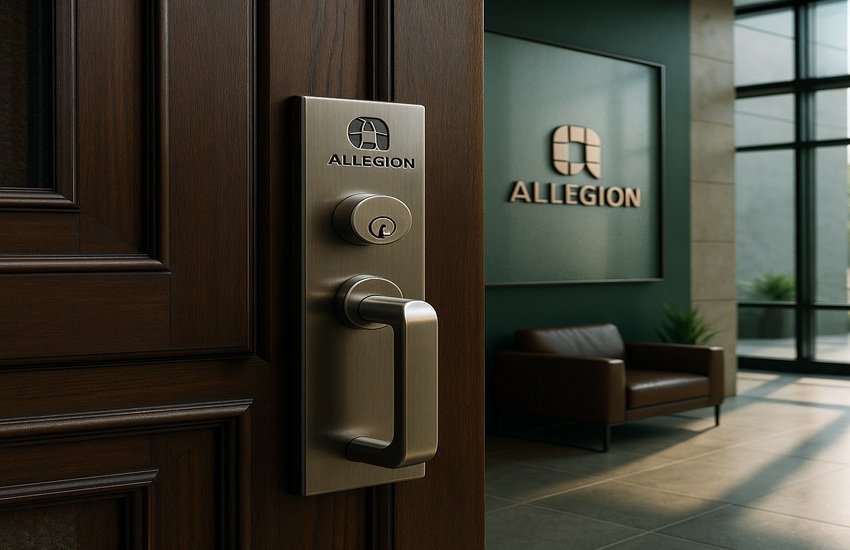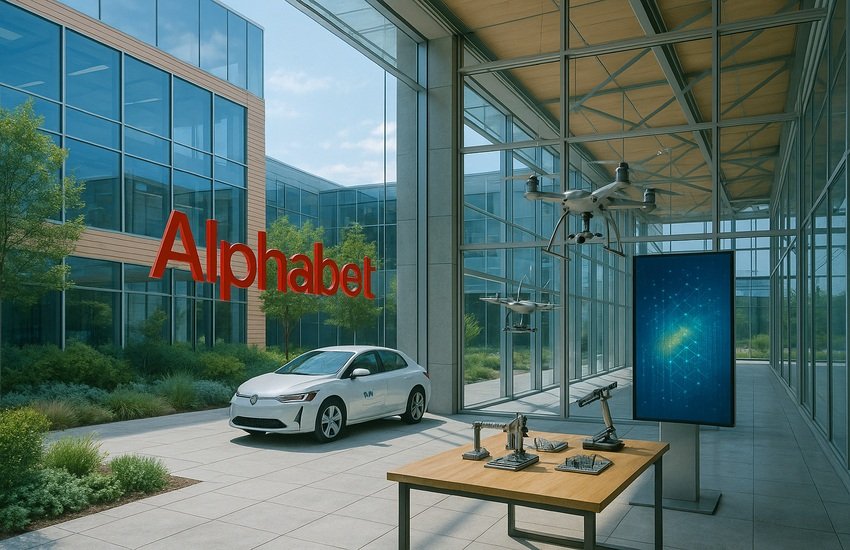Sign Up For Free To Keep Reading
Allegion’s latest foray into the UK market via its proposed acquisition of UAP Group signals a bold pivot toward deepening its mechanical hardware offerings and broadening its geographic footprint. Fresh off its first $1 billion quarter and bolstered by a string of strategic deals—including ELATEC’s electronic credentialing and SaaS bolt-ons like Gatewise and Waitwhile—Allegion is eyeing UAP’s nearly 200 patents, trademarks and designs to turbocharge its innovation engine. With UAP reporting into Allegion International, the deal dovetails neatly with Allegion UK’s existing non-residential portfolio while unlocking new residential door-hardware segments. As Allegion raises its 2025 EPS outlook to $8.00–$8.15 and maintains a healthy 1.5× net debt/EBITDA ratio, the UAP acquisition could be the linchpin in sustaining its mid-single-digit organic growth trajectory. Yet success hinges on realizing cross-sell opportunities, capturing cost synergies and integrating UAP’s product line without diluting margin resilience—a complex dance for any global security leader.
Portfolio Complementarity & Product Innovation
Allegion’s acquisition of UAP promises a seamless infusion of premium residential hardware into its predominantly commercial and institutional product suite, expanding its core mechanical portfolio at a time when electronics and software offerings are already on an accelerated growth curve. By integrating UAP’s best-in-class residential door hardware—backed by nearly 200 patents and registered designs—Allegion can tap into a segment that has historically fallen outside its primary non-residential focus, thereby balancing its revenue streams across end-markets. This complements Allegion’s residential downturn in high-interest environments by adding specifiable, high-margin products that cater to new home builders, renovators and multifamily developers. The innovation synergy lies in cross-pollinating UAP’s design ethos with Allegion’s R&D capabilities, enabling rapid iteration on batteryless electronic cylinders like FORTLOX and potentially spawning hybrid mechanical-electronic solutions tailored for smart homes. Such collaboration accelerates Allegion’s roadmap toward integrated access ecosystems, where mechanical robustness meets digital convenience. By leveraging UAP’s accelerated product development cycle and Allegion’s global supply-chain muscle, the combined entity could shorten time-to-market for breakthrough hardware innovations, driving incremental revenue and sustaining leadership in both commercial and residential lock-and-access markets.
Geographic Expansion & Channel Integration
Entering the UK residential hardware market through UAP provides Allegion with an established footprint and an extensive distribution network, eliminating the friction of greenfield expansion. UAP’s Bury, England–based operations and deep relationships with UK distributors and installers complement Allegion’s non-residential channels, enabling cross-selling of each company’s flagship brands—Schlage®, CISA® and SimonsVoss® among them. Through aligned go-to-market teams, Allegion can deploy UAP’s high-specification residential products in commercial projects (e.g., multifamily housing within mixed-use developments) while simultaneously offering Allegion’s electronic and software solutions to UAP’s existing customer base. This two-way channel integration fosters recurring revenue streams: residential installers gain access to Allegion’s electronic locking systems, and Allegion’s commercial clients unlock UAP’s mechanical hardware for retrofit and new-build applications. Enhanced by localized manufacturing and inventory management in the UK, the merger reduces lead times, curbs freight costs and mitigates currency exposure by sourcing more components regionally. Moreover, with the UAP business reporting directly into Allegion International, the organization can streamline reporting structures and harmonize sales incentives, ensuring that growth in one segment catalyzes performance in the other, ultimately fortifying Allegion’s strategic position across Europe.
Operational Efficiency & Cost Synergies
The union of Allegion and UAP offers material opportunities for cost synergies through manufacturing rationalization, shared procurement and optimized logistics. By consolidating overlapping production facilities, the combined company can achieve higher capacity utilization rates and lower per-unit costs for both mechanical and electronic components. UAP’s specialized tooling and processes for decorative hardware can be integrated into Allegion’s global supply chain, unlocking volume discounts with key suppliers and reducing raw-material waste. Shared warehousing and distribution centers across the UK and Continental Europe further trim overhead by centralizing inventory and cutting redundant handling steps. On the administrative side, back-office functions—finance, HR, and IT—can be merged to eliminate duplicate roles and standardize systems, driving down SG&A expenses. These efficiencies bolster Allegion’s adjusted operating margin, which stood at 23.7% in Q2 and benefitted from price–productivity gains despite $40 million of tariff-related cost inflows. Realizing these savings, however, demands careful change management to prevent service disruptions and maintain the robust cash generation that supports Allegion’s 1.3% dividend yield and mid-single-digit free-cash-flow yields. If executed smoothly, integration expenses could be offset within 12–18 months, enhancing long-term profitability without compromising the integrity of either brand.
Intellectual Property Leverage & R&D Collaboration
Acquiring UAP means adding nearly two centuries of collective IP—patents, trademarks and registered designs—to Allegion’s innovation arsenal, which currently leads with electronic credentials and emerging SaaS solutions. UAP’s design patents underpin distinctive door-hardware aesthetics and mechanical reliability, attributes that can be repurposed into Allegion’s digital access devices to create differentiated, design-forward product lines. IP pooling allows cross-licensing, reducing royalty burdens and accelerating joint R&D projects aimed at novel access concepts, such as smart levers with embedded biometric sensors or mechanical cylinders that integrate seamlessly with cloud-based key management. This synergy extends to Allegion’s SimonsVoss batteryless cylinder technology: combining UAP’s mechanical know-how with Allegion’s electronics expertise could yield next-generation products that slash maintenance costs and environmental impact. Furthermore, R&D teams can collaborate on benchmarking tests, leveraging UAP’s artisanal prototyping capabilities to iterate rapidly and validate performance under rigorous security standards. While harnessing this IP boost accelerates Allegion’s innovation pipeline, it also necessitates robust governance frameworks to protect trade secrets, align patent filings and ensure global compliance—a balancing act essential to translating intangible assets into sustained competitive advantage.
Key Takeaways
While the proposed acquisition of UAP offers Allegion a compelling blend of product expansion, geographic reach, operational leverage and IP enrichment, it also brings integration risks, brand alignment challenges and execution complexity that could temper anticipated gains. Successfully merging go-to-market channels and realizing cost synergies without disrupting UAP’s agile innovation culture will be critical. Moreover, Allegion’s current valuation—trading at a trailing LTM EV/EBITDA of 17.0× and a P/E of 23.2×, and forward at 15.3× EV/EBITDA and 20.5× P/E—reflects premium expectations for continued growth and margin expansion. Any dilution of earnings or delays in synergy capture could pressure these multiples, potentially constraining shareholder returns. Conversely, a smooth integration that drives sustainable earnings accretion could justify maintaining or even expanding the valuation premium. In this light, the UAP deal stands as a double-edged sword: it could catalyze Allegion’s next chapter of innovation and market leadership or challenge its ability to uphold lofty market multiples amid integration hurdles.





